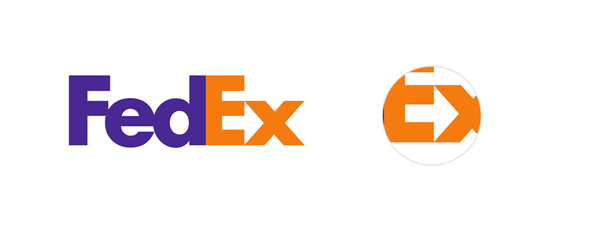Simplicity: The Key to Good Logo Design!

A good logo is the foundation for a brand's identity, and while identity is an an important part of the marketing process, it shouldn't be confused with more complex activities like advertising. The best logos are simple. They define brands and provide a recognizable visual reference, and they don't attempt to describe services or sell products.
This means that graphics matter more than anything else in logo design. A viewer should be able to glance at a logo and quickly know what it stands for.
Text-Only Logos: Simple and Effective
Consider the FedEx logo as a classic example.

This logo is efficient, colorful and easily recognizable, but it doesn't really tell the viewer anything about what the company does. There's only one subtle detail that hints very abstractly at what the company does, and it comes in the form of a hidden arrow in the negative space between the "E" and the "x".
Clever but uncomplicated details like this, which don't try to do anything more than create memorable graphics, are the best foundation for an effective logo. Conceptual details and abstractions like the arrow in the FedEx logo are almost always preferable to the use of literal representation. Using the logo to hint at but not define the brand's purpose will allow the graphic to stand on its own and become a shorthand visual representation of the business, organization, group or event it stands for.
Graphic Icon Logos: Symbolism and Recognition
Both simple text designs and icon graphics can serve as a foundation for a good logo. The Olympic Rings icon is one of the oldest and best examples of an instantly recognizable graphic logo. First created in 1912, this minimalistic logo, which features rings in blue, yellow, black, green and red on a white background, hasn't changed much in a century. It's difficult to imagine worthwhile improvements to such an impeccable design.

Though it's incredibly simple, this graphic is perfectly effective. You know what it stands for when you look at it. When you dig deeper, you find that there's symbolism behind every element. The interlocked rings represent unity between disparate continents, and the colors are chosen specifically because they represent the colors in nearly every nation's flag that participates in the games. However, one doesn't need to know those details in order to see the rings and instantly think of the Olympics. The graphic doesn't have anything to do with sports and isn't trying to describe what happens during the games, but it is nonetheless an iconic representation of the event that's recognizable in any language or culture. This demonstrates how simplicity is a key component of success in logo design.
Finding Your Process
Achieving effective, stand-out simplicity can be quite a challenge, but that's part of the fun. Coming up with a strategy to serve as a foundation for logo designs can be a useful way to get it right every time. One strategy is to use simplified visual elements relating to the brand and abstract those to create a strong minimalist graphic. Look at this example, a logo for a coffee shop:

Using the actual image of a coffee cup or coffee bean for a coffee shop graphic is too on the nose; it's not sophisticated enough to really stand out. To keep it fresh, modern and unique, the designer used the forms of a coffee cup, coffee bean and the letter E, all of which relate to the client and have similar oblong shapes, to create an original graphic that's completely unique and instantly recognizable.

Every designer will have his or her own process for developing good logos, but it's important to remember that simplicity is key. Your unique aesthetic and taste should absolutely make a mark on the logos you create, but no matter what form that takes, the goal should always be to create something unique, simple and focused on the brand.
About the Author
Emin Sinanyan is a logo designer based in Los Angeles. On his free time, he enjoys drawing, reading and blogging.
Subscribe to Our Newsletter!
Latest in Web Design








